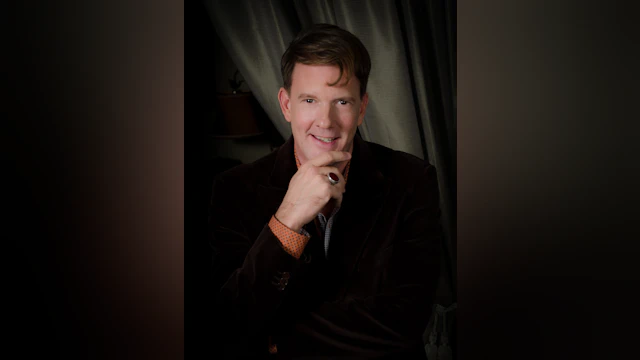March 31, 2017 – They say that coming out isn’t for sissies. I disagree, because this sissy did it five times, but I understand their point. The first time I came out was as a gay man when I was 18. That was easy since my queerness seemed as obvious as the red hair on my head. “Hey, y’all! I have red hair, I’m gay, now let’s have some fun!” Booze was a giant whiskey barrel of that fun for many years. Until it wasn’t.
Owning my alcoholic identity — my second coming out — after I hit bottom wasn’t quite the party as my emergence from the gay closet had been. However, I had been joking for years that I was a functioning alcoholic. Those closest to me witnessed my fall, and to shed my persona as a glamorous lush, I felt compelled to come out as an alcoholic in recovery. The reactions were the same as they were to my first coming out: all were supportive; few were surprised.
Coming out as an SAS (suicide attempt survivor—my preferred term), took several years and multiple stages. My alcoholic bottom was a suicide attempt. I certainly had shame about being an alcoholic, but initially I felt that no one other than my closest friends and family could ever know that I am an SAS. That shame I must bear alone. As months grew into years of me being sober and talking about my suicide attempt in sober meetings, I became comfortable sharing that with others. I went public as an SAS when I wrote a book, Dangerous When Wet: A Memoir of Booze, Sex, and My Mother, about my alcoholism. I couldn’t tell my alcoholic story without coming out as an SAS. I realized that once I didn’t bear the shame alone, I didn’t bear the shame.
With the book, I also came out as HIV positive, a secret only my partner, my therapist, and a handful of close-to-the-vest family and friends knew. I’d been in the closet about it for 12 years. I became HIV positive during my reckless drinking days. I could have told the story of my alcoholism without revealing that secret, but like my suicide attempt, I realized it was crucial to the story I was telling. So for the fourth time, I came out, which made me a gay, alcoholic, SAS, HIV-positive man. The reactions from those who knew me? Supportive and surprised. How did it make me feel? Liberated and relieved. I no longer cared what anyone thought. I no longer even cared what I thought, in a way.
However, I still suffered from a double dose of suicide shame. I had attempted suicide 11 years before the attempt that was my alcoholic bottom, but kept that memory buried under a pile of dirty laundry in the back of my proverbial closet. I had told no one—not my partner of 25 years, my therapist of 10 years, family, nor friends. I was ashamed of that first attempt and ashamed that I was still in the closet about it, especially since I was out about the other one.
Once again, writing saved me. After telling my partner, therapist and close friends, I came out a fifth time. I wrote about that first attempt in an essay for The New York Times so I could stand up and be counted as a two-time SAS.
What I hadn’t realized until I decided to admit that first attempt to another person, was that my silence nearly killed me. 11 years after that first attempt, I tried again: my alcoholic bottom, as I already mentioned. Because that time I was discovered, the jig was up, and my winding path to recovery began.
Why bother talking about the first attempt now that I’ve been sober for eight years and living a fulfilling life beyond my dreams? Because the secret made me feel like a house rebuilt on a foundation still riddled with termites. I knew I would have to own the attempt eventually, so when the Centers for Disease Control and Prevention recently released a report that suicides had surged to the highest levels in 30 years, I knew it was time for me to come clean.
With two attempts on my score card, I forever remain in a suicide high risk group. According to the Harvard T.H. Chan School of Public Health, a history of suicide attempt is one of the strongest risk factors for suicide, and the American Foundation for Suicide Prevention reports that approximately 40 percent of those who have died by suicide have made a previous suicide attempt at some point in their lives. I don’t want the third time to be the charm.
The more time passed since that first attempt, the deeper the secret grew and the less real it seemed. I didn’t really do that. I didn’t mean it. I didn’t think a few painkillers would kill me. But I did do it and I did mean it. I used to be mortified by that.
As a recovering alcoholic, I know that admitting to my behavior and owning my story is the only way it can no longer own me. I’m not ashamed of being an alcoholic. Add to that that I’m not ashamed of being a two-time SAS.
Shame kept me quiet about my first attempt. I admit it now, and I throw out a call for other closeted suicide attempt survivors to do the same: own it, and find — or create — a safe support network where you can talk about it.
Today I own my story, so that my story doesn’t kill me.
Jamie Brickhouse is the author of “Dangerous When Wet: A Memoir of Booze, Sex, and my Mother” (St. Martin’s Press), often speaks at conferences about his lived experience as an SAS, and will present a breakout session at AFSP’s upcoming conference Stronger Communities: LGBTQ+ Suicide Prevention, on May 11, 2017 in Fishkill, NY.
